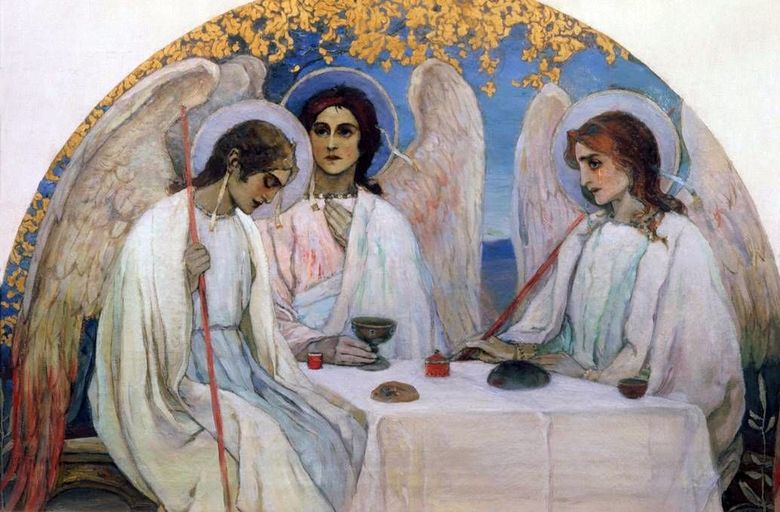
The creative work of Mikhail Vasilyevich Nesterov grew on the basis of the Christian spiritual tradition. It was inspired by the idea of Orthodoxy as the driving force of national history. Over twenty-two years of his life Nesterov gave the church paintings and icons.
In 1890, Nesterov accepted the offer of V. M. Vasnetsov to work at the Vladimir Cathedral in Kiev. Here he created more than 30 major compositions, as well as icons for the iconostasis. He was attracted by the task of creating a modern monumental painting, which once reached the heights in the works of ancient masters. The source of non-Sister figurativeness and in church works is living life.
In numerous full-scale sketches, he works out the details of the composition, the human figure, the face. Further along the path of convergence with the modernist style, Nesterov goes on to the paintings for the Alexander Nevsky Church in Abastumani in Georgia. More significant were his monumental paintings in the church of the Marfo-Mariinsky Convent in Moscow.
He executed the main paintings based on specific visual impressions. Only in the images made for the iconostasis, he used the laconism of the lines and the generalization of the silhouettes of the church original sources. The artist managed to bring a new, poetic world perception and a new style and new colors into church painting. The intentions of Nesterov to revive the great style of ancient monumental art based on the study of Byzantine designs are reinforced by his statement about ancient art: “In Byzantium I take a great interest in […] that inviolability has come to us – I take a fancy of there by a tenacious force […] I believe in its future, as well as the future of a serious and creative force of the Russian people, in whose fate there are common motives with Byzantium. “
The iconography “The Old Testament Trinity” which appeared in Byzantium received its comprehension in the Old Russian icon painting. Following this understanding, the centerpiece in the composition of Nesterov assigns three winged angels. The position of their figures, turns of heads with nimbus, adjoining wings form a kind of compositional circle. The picture shows the eternal advice of the Holy Trinity on the deliverance of the human race from original sin and the sacrificial act of the Son of God for the salvation of mankind from spiritual death.
 La Trinité de l’Ancien Testament – Mikhail Nesterov
La Trinité de l’Ancien Testament – Mikhail Nesterov Portrait of artists P. D. and A. D. Korinykh by Mikhail Nesterov
Portrait of artists P. D. and A. D. Korinykh by Mikhail Nesterov Silence. Solovki. Chanterelle by Mikhail Nesterov
Silence. Solovki. Chanterelle by Mikhail Nesterov Two frets by Mikhail Nesterov
Two frets by Mikhail Nesterov Philosophers by Mikhail Nesterov
Philosophers by Mikhail Nesterov Three Elders by Mikhail Nesterov
Three Elders by Mikhail Nesterov Portrait of the academic physiologist I. P. Pavlov by Mikhail Nesterov
Portrait of the academic physiologist I. P. Pavlov by Mikhail Nesterov Natasha on the garden bench by Mikhail Nesterov
Natasha on the garden bench by Mikhail Nesterov